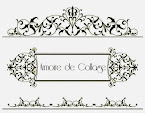 Fountain pens have a very devoted and loyal following. They’re often treated as status symbols and luxury goods, and become family heirlooms. The novelty of using of a fountain pen is a great conversation starter; it will almost always invoke a comment.
Fountain pens have a very devoted and loyal following. They’re often treated as status symbols and luxury goods, and become family heirlooms. The novelty of using of a fountain pen is a great conversation starter; it will almost always invoke a comment.The patent for the first fountain pen with a replaceable ink cartridge, was issued to a Romanian inventor, Petrache Poenaru, on May 25, 1827. By the mid-eighteen hundreds, fountain pens were in high production as the result of hard rubber, free-flowing ink, and the iridium-tipped gold nib. In America the dominant producer was Waterman who began marketing a ‘safety pen’ in 1907, that soon became the most widely distributed pen. Their screw-on cap with inner caps that sealed around the nib, effectively solved leakage problems. As a result, Waterman remained the market leader until the 1920s. Until this time, almost all fountain pens were filled using an eyedropper…a messy process. By the turn of the century, the eyedropper method was replaced with Conklin’s crescent-filler, and followed by Waterman's twist-filler. The most successful innovations were Walter A. Sheaffer’s lever-filler ( introduced in 1912) and Parker's button-filler.
Fountain pens were the principal writing instruments during the 1940s and 50s, but by the 1960s, refinements in ballpoint pen design, improvements in production, and less expensive materials, resulted in ballpoint pens becoming mainstream for casual writing usage.But the popularity of using a fountain pen has increased for both ergonomic and ecological reasons. Fountain pens relieve the physiological stress from writing, easing the pain of arthritis and carpel tunnel syndrome. The liquid ink flow requires less pressure when writing which reduces cramping. Fountain pens are more eco-friendly, lasting a lifetime and not contributing to landfill debris. The wide variety of nibs allows for different writing styles, thus eliminating the need for a variety of different writing utensils, as with calligraphy.
Gold is considered the optimum metal for nibs for its flexibility and resistance to corrosion. Older and antique nibs were originally tipped with rubies, but later wear-resistant alloys were introduced, typically from the platinum group, making them impervious to wear. Users are cautioned not to lend or borrow fountain pens as the nib "wears " at different angles unique to each individual.Not being left-handed, I wasn’t aware that there were also left-handed fountain pen nibs. Left-handed nibs are more rounded on the tip, specifically for languages that are written from left to right, like English.
Pen enthusiasts collect and use antique and some well-made modern pens, and almost always showcase them in glass displays. One such avid collector, Lee Crawley, Jr. of The Woodlands, Texas, uses them daily in his law practice, and has them proudly displayed when not in use. When collections become extensive, collectors become dealers like Tim Pierson, who has approximately 4,000 pens in his collection. He said he’s owned twice that many since he’s been collecting for twelve years, and is self-taught on repairing them.
Although high-end fountain pens made of precious metals are hard to find in antique shops, many fine pens are still available. A quality fountain pen would be a treasured gift for a graduate or for dad on Father’s Day.



No comments:
Post a Comment